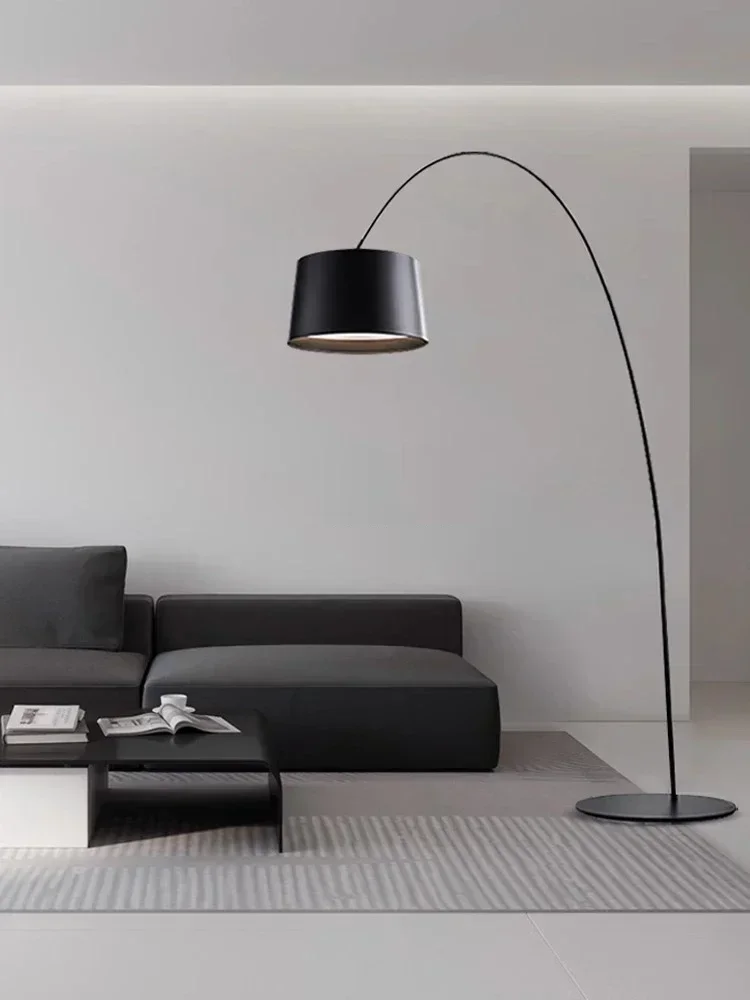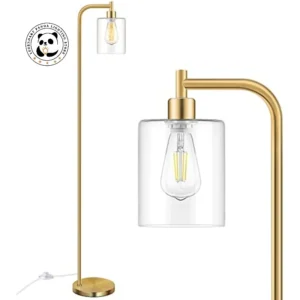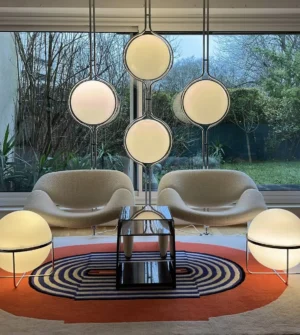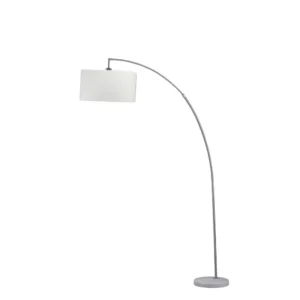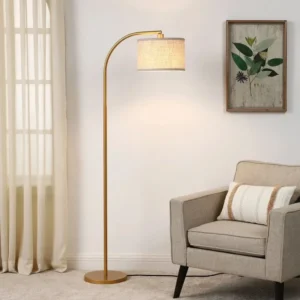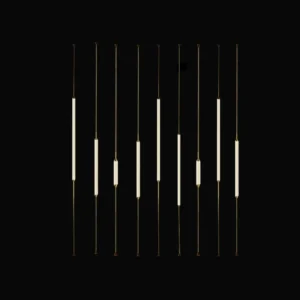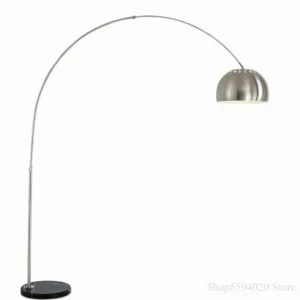Introduction: Understanding Chrome and Brass Materials
When selecting fixtures and hardware for your home, the choice between chrome and brass is one that many homeowners face. While these materials often serve similar purposes, they are fundamentally different in nature and bring distinct qualities to your space. Chrome is actually a plating or finish applied to other metals, while brass is a solid metal alloy made primarily of copper and zinc.
Understanding the difference between these popular options is crucial because they affect everything from the look of your space to long-term maintenance requirements. The choice between chrome and brass becomes particularly important when selecting:
- Bathroom and kitchen fixtures
- Door handles and cabinet hardware
- Lighting fixtures and lamp components
- Decorative home accents and furniture elements
Making the right choice requires weighing factors like appearance, durability, maintenance needs, and cost. This comparison will explore each of these factors in depth to help you determine which material best suits your specific needs, style preferences, and budget. The process of choosing the perfect arc floor lamp for your space follows many of the same decision points we’ll discuss here.
What is Chrome? Composition and Manufacturing
Chrome isn’t actually a standalone material, but rather a thin layer of chromium applied through electroplating onto a base metal. This electroplating process involves using an electric current to deposit a layer of chromium onto another metal surface. This process creates the distinctive, mirror-like finish that chrome is known for.
The base metals commonly used under chrome plating include:
– Brass
– Steel
– Zinc alloys
– Occasionally plastic (with specialized preparation)
Chrome plating is typically very thin, ranging from 0.3 to 0.5 mils (8-13 microns) for decorative applications. This relatively thin layer creates different finishes depending on the manufacturing process:
- Polished chrome: The most common type with a mirror-like, highly reflective surface
- Brushed chrome: Features a subtle linear grain that reduces fingerprint visibility
- Satin chrome: Offers a softer, more matte appearance with minimal reflection
Understanding that chrome is a plating rather than a solid material is critical when considering its durability and maintenance requirements.
Many modern interior designers favor the clean, sleek look of chrome arc floor lamps in contemporary spaces.
What is Brass? Composition and Properties
Unlike chrome, brass is a solid metal alloy primarily composed of copper and zinc mixed together in varying proportions. These different proportions directly affect the color, strength, and workability of the brass. The copper content typically ranges from 55% to 90%, with the remainder being primarily zinc.
Common brass alloy types include:
- Yellow brass: Contains about 70% copper and 30% zinc, offering the classic gold appearance most people associate with brass
- Red brass: Contains approximately 85% copper and 15% zinc, resulting in a warmer, reddish-gold color and improved corrosion resistance
- Naval brass: Contains copper, zinc, and a small amount of tin (around 1%) for enhanced resistance to salt water corrosion
As a solid material rather than a coating, brass offers consistent properties throughout its entire structure. When scratched or damaged, brass reveals more brass underneath rather than an underlying base metal. This fundamental difference affects everything from how brass ages to how it can be repaired or restored.
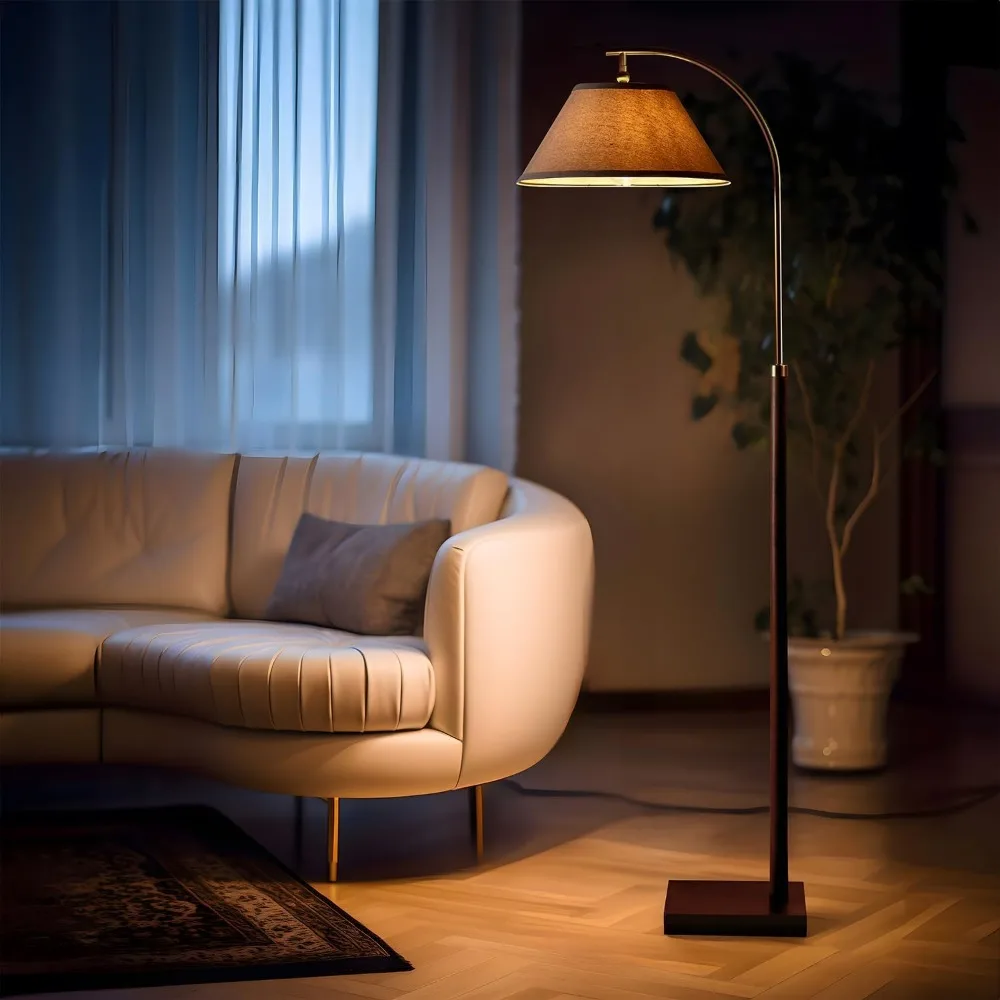
For those seeking a warm, inviting atmosphere, brass arc floor lamps provide both functional lighting and a touch of elegance.
Chrome Finishes: Types and Characteristics
Chrome’s visual characteristics make it instantly recognizable in home design. Its highly reflective surface creates a mirror-like quality that bounces light around the room and often appears to take on the colors of its surroundings. This reflective property gives chrome a distinctly cool, crisp appearance that feels clean and modern.
Chrome finishes offer several notable properties:
– Hardness: Chrome plating scores approximately 9 on the Mohs hardness scale (compared to a diamond at 10), making it extremely resistant to scratching
– Smoothness: The electroplating process creates an exceptionally smooth surface that feels slick to the touch
– Light interaction: Chrome’s high reflectivity can make spaces feel brighter and sometimes larger
– Color consistency: Chrome maintains its silver appearance without yellowing or changing color over time
The appearance of chrome can vary slightly depending on the quality of the plating process and the base metal used. Higher-quality chrome plating is thicker and more durable, though this isn’t always visible to the naked eye. When selecting chrome fixtures, the weight often indicates the quality of the base metal rather than the chrome itself.
Chrome appears particularly striking in spaces with good lighting, where its reflective qualities can be fully appreciated. The perfect arc floor lamp guide offers additional insights on how different finishes interact with your space’s lighting.
Brass Finishes: Types and Characteristics
Brass naturally exhibits a warm, golden hue that brings richness and character to spaces. Unlike chrome, brass is a “living” finish that evolves over time, developing what’s known as a patina—a natural darkening and subtle color variation that many people find appealing. This aging process gives brass items a sense of history and depth.
Brass is available in several finish types:
– Polished brass: Features a high-shine, mirror-like surface that showcases the full golden color
– Unlacquered brass: Allows the natural patina process to occur, darkening and developing character over time
– Antique brass: Pre-treated to simulate an aged appearance with darker tones and sometimes subtle greenish hints
– Brushed brass: Features a textured, directional grain that reduces fingerprints and offers a more subtle shine
Beyond its appearance, brass offers natural antimicrobial properties that can reduce bacteria on surfaces by up to 99.9% within two hours of contact. This makes it particularly valuable in high-touch areas like doorknobs and handles.
Brass has a distinctive weight and feel that many associate with quality and craftsmanship. It feels substantial and solid, with a slightly warmer touch than other metals. Understanding the differences between brass vs. chrome arc lamps can help guide your lighting decisions.
Direct Comparison: Aesthetics and Design Impact
When comparing chrome and brass aesthetically, you’re essentially choosing between two distinct design languages:
| Characteristic | Chrome | Brass |
|---|---|---|
| Color tone | Cool, silvery | Warm, golden |
| Design style | Modern, contemporary | Traditional, vintage, timeless |
| Light reflection | High, mirror-like | Warm, subtle glow |
| Visual weight | Light, airy | Rich, substantial |
| Aging appearance | Maintains consistent look | Develops patina and character |
Chrome creates a clean, modern aesthetic that works exceptionally well in contemporary, minimalist, and industrial design schemes. Its reflective quality can make small spaces feel larger and brighter. Chrome tends to recede visually, allowing other design elements to take center stage.
Brass, meanwhile, brings warmth and character to spaces. It complements traditional, vintage, mid-century modern, and even certain contemporary design styles. Brass fixtures often serve as focal points or statement pieces that add visual interest and depth to a room.
When considering which material to use, think about how it will interact with your existing color palette and materials. Chrome pairs beautifully with cool colors and materials like glass, stainless steel, and crisp whites. Brass harmonizes with warm woods, leather, and rich color palettes. The process of choosing brass or chrome lighting should account for these aesthetic considerations.
Direct Comparison: Durability and Longevity
When it comes to longevity and durability, the fundamental nature of each material plays a crucial role:
Chrome Durability:
– Depends heavily on the quality and thickness of the plating
– Relies on the strength of the underlying base metal
– Can chip or flake if the plating is damaged, exposing the base metal
– Once the plating is compromised, corrosion can occur rapidly
– High-quality chrome plating on solid brass or steel can last decades with proper care
Brass Durability:
– As a solid material, offers consistent strength throughout
– May dent or scratch but won’t chip or flake
– Scratches can often be polished out
– Naturally develops patina rather than deteriorating
– Can easily last generations with basic maintenance
– Thicker and heavier brass items offer greater durability
The key difference is how these materials fail over time. Chrome tends to maintain its appearance until the plating fails at some point, after which deterioration can occur quickly. Brass changes gradually, developing character rather than failing suddenly.
For items that experience heavy use or frequent handling, solid brass often provides better long-term value despite its higher initial cost. For decorative items or less frequently used fixtures, chrome can provide excellent durability at a lower price point.
Direct Comparison: Corrosion and Tarnish Resistance
Both materials offer different types of resistance to environmental factors:
Chrome:
– Excellent corrosion resistance when plating remains intact
– Virtually immune to tarnishing
– Can withstand most bathroom cleaners and chemicals
– Performs well in humid environments like bathrooms
– Vulnerable at plate edges or if the plating is compromised
– May show rust spots if the base metal is exposed
Brass:
– Naturally corrosion-resistant due to copper content
– Will tarnish and develop patina over time (not considered damage)
– Contains natural antimicrobial properties
– More resistant to saltwater than many other metals
– Can be protected with lacquer to prevent patina development
– May develop verdigris (green patina) in extremely humid conditions
Chrome excels in high-moisture environments like bathrooms and kitchens where its resistance to water spots and ease of cleaning make it practical. Brass performs exceptionally well in coastal environments where salt air would quickly damage many other metals.
Understanding the chrome vs. brass material costs over time requires considering both initial investment and long-term maintenance needs based on your specific environment.
Direct Comparison: Maintenance Requirements
The maintenance routines for chrome and brass differ significantly:
Chrome Maintenance:
1. Wipe with soft, damp cloth regularly
2. Use mild soap for stubborn spots
3. Avoid abrasive cleaners or scouring pads
4. Dry after cleaning to prevent water spots
5. Apply automobile wax once yearly for extra protection (optional)
Brass Maintenance:
1. For polished brass: clean with specialized brass cleaner every 1-3 months
2. For unlacquered brass: allow patina to develop naturally or clean to maintain shine
3. Use lemon juice and salt paste for natural cleaning
4. Apply thin coat of clear paste wax for additional protection
5. Avoid harsh chemicals that can damage the metal
Chrome typically requires less frequent maintenance but offers fewer restoration options if damaged. Brass requires more regular attention if you want to maintain its original shine, but can usually be restored even after significant neglect.
The time commitment differs as well: chrome maintenance is quick but offers little room for restoration, while brass maintenance takes longer but allows for complete renewal even after years of neglect.
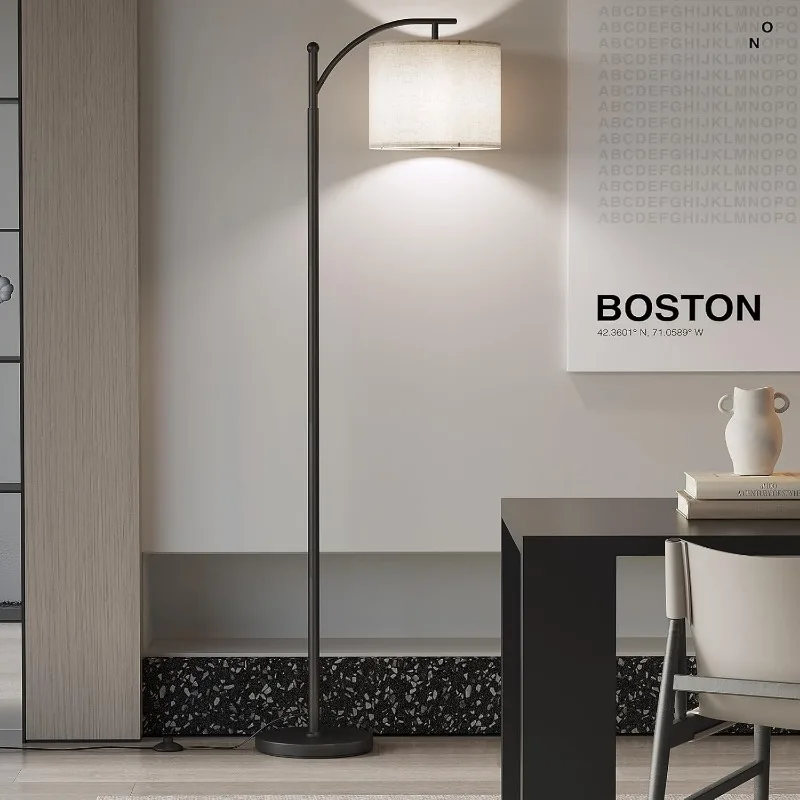
Direct Comparison: Cost Analysis (Initial vs Long-Term)
The financial considerations when choosing between chrome and brass extend beyond the initial purchase:
Initial Cost:
– Chrome fixtures typically cost 30-50% less than comparable brass items
– Chrome-plated plastic offers the lowest entry price point
– Solid brass commands premium pricing, especially for larger items
– Chrome-plated brass falls in the middle price range
Long-Term Value:
– Brass items often retain value and can even appreciate if well maintained
– Chrome items rarely appreciate but maintain functionality with proper care
– Brass fixtures can last generations with occasional restoration
– Chrome fixtures may need replacement if the plating fails beyond repair
– Maintenance supplies for brass can add ongoing costs
The price gap varies by application. For example, a chrome bathroom faucet might cost $80-150, while a similar solid brass model could run $150-300. For lighting fixtures, the gap can be even more pronounced, with brass options sometimes costing twice as much as chrome alternatives.
Quality variations within each category significantly impact both price and longevity. High-quality chrome plating on solid brass can approach the lifespan of solid brass at a slightly lower price point, while thin chrome plating on zinc alloy may fail within a few years in demanding environments.
Direct Comparison: Weight and Physical Feel
The physical properties of these materials create distinctly different tactile experiences:
Chrome:
– Typically lighter due to common use of lightweight base metals
– Feels cool to the touch initially
– Provides a smooth, slick surface texture
– Often feels less substantial than brass counterparts
– Creates a “clean” tactile impression
Brass:
– Noticeably heavier than chrome fixtures of similar size
– Feels slightly warm to the touch
– Offers a rich, substantial feel that many associate with quality
– Provides satisfying weight in handles and knobs
– May develop subtle texture as patina forms
The weight difference can affect both perception and practical considerations. Heavier brass fixtures often require more substantial mounting hardware. For door handles and cabinet pulls, the weight of brass creates a different operational feel that many users prefer.
For lighting fixtures like gold arc floor lamps, weight affects stability and perceived value. The substantial feel of brass components often contributes to a sense of luxury and craftsmanship.
Applications: Where Chrome Excels
Chrome proves to be the ideal choice in several specific scenarios:
- Modern and contemporary interiors where clean lines and reflective surfaces enhance the design aesthetic
- High-moisture environments like bathrooms and kitchens where resistance to water spots is valuable
- Spaces requiring frequent cleaning where the smooth surface simplifies maintenance
- Budget-conscious renovations seeking a contemporary look without premium costs
- Commercial spaces where standardized appearance and low maintenance are priorities
- Small spaces where the reflective properties can help the room feel larger
- Minimalist design schemes where chrome’s unobtrusive appearance fits the aesthetic
- Mixed-metal designs where chrome’s neutral tone complements other finishes
Chrome’s versatility makes it particularly well-suited for rental properties, where low maintenance and broad appeal are important considerations. The clean look of silver arc floor lamps complements this modern aesthetic perfectly.
Applications: Where Brass Excels
Brass finds its perfect application in several specific contexts:
- Traditional and heritage interiors where warmth and character are desired
- Spaces designed for longevity rather than following trends
- High-touch surfaces like doorknobs where antimicrobial properties add value
- Statement pieces and focal points in a room’s design
- Historic renovations seeking period-appropriate fixtures
- Luxury and high-end residential settings where material quality signals craftsmanship
- Environments with distinctive design personalities rather than neutral spaces
- Coastal locations where corrosion resistance is crucial
Brass particularly shines in spaces where a sense of history and character is valued over absolute uniformity. It tends to become more beautiful with age, developing a unique patina that tells the story of its use. Understanding what to look for in arc floor lamps helps identify quality brass components.
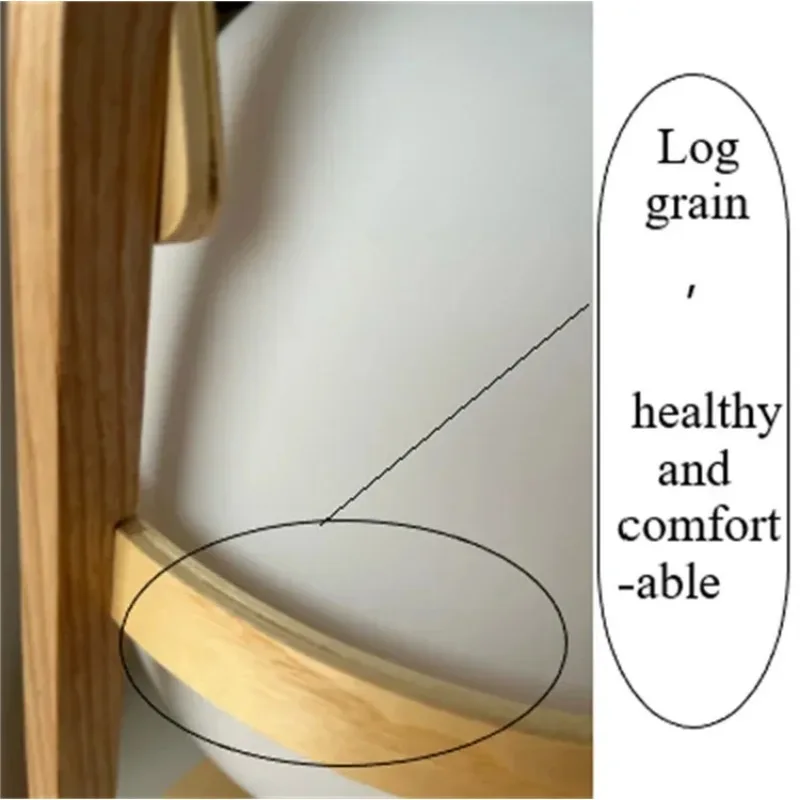
Comprehensive Comparison Table: Chrome vs. Brass
| Feature | Chrome | Brass |
|---|---|---|
| Appearance | Cool, silvery, reflective | Warm, golden, develops character |
| Initial Cost | Lower (★★★☆☆) | Higher (★★☆☆☆) |
| Long-term Value | Moderate (★★★☆☆) | Excellent (★★★★★) |
| Durability | Good if plating intact (★★★☆☆) | Excellent as solid material (★★★★★) |
| Maintenance Ease | Simple, frequent (★★★★☆) | More involved (★★★☆☆) |
| Corrosion Resistance | Excellent until compromised (★★★★☆) | Very good, develops patina (★★★★☆) |
| Design Versatility | Contemporary, modern (★★★★☆) | Traditional to mid-century (★★★★☆) |
| Weight | Lighter (★★☆☆☆) | Heavier, substantial (★★★★★) |
| Environmental Impact | Moderate concerns with plating process (★★★☆☆) | Highly recyclable (★★★★☆) |
This comparison highlights how each material has specific strengths depending on your priorities. Chrome offers practical benefits in certain applications, while brass provides exceptional longevity and developing character. The best arc lamps for living rooms often incorporate thoughtful material choices based on these factors.
Brass Arc Floor Lamp, Contemporary Arc Floor Lamp, LED Arc Floor Lamp
Price range: $490.72 through $522.04 Select options This product has multiple variants. The options may be chosen on the product pageChrome Arc Floor Lamp, LED Arc Floor Lamp
Price range: $304.95 through $1,210.40 Select options This product has multiple variants. The options may be chosen on the product pageContemporary Arc Floor Lamp, Silver Arc Floor Lamp
$459.99 Select options This product has multiple variants. The options may be chosen on the product pageContemporary Arc Floor Lamp, Gold Arc Floor Lamp
$196.24 Select options This product has multiple variants. The options may be chosen on the product pageChrome Arc Floor Lamp, Dimmable Arc Floor Lamp, Gold Arc Floor Lamp, LED Arc Floor Lamp
Price range: $623.49 through $2,417.47 Select options This product has multiple variants. The options may be chosen on the product pageAdjustable Arc Floor Lamp, Contemporary Arc Floor Lamp, Marble Base Arc Floor Lamp, Silver Arc Floor Lamp
Price range: $366.11 through $1,408.11 Select options This product has multiple variants. The options may be chosen on the product page
Making Your Decision: Key Factors to Consider
When deciding between chrome and brass, consider these essential questions:
Budget Priorities:
– Are you more concerned with initial cost or long-term value?
– Is this a forever home where investment pieces make sense?
– Will you maintain the item long enough to benefit from brass’s longevity?
Design Compatibility:
– What is your existing design style? (Contemporary favors chrome, traditional favors brass)
– Are you mixing metal finishes throughout the space?
– Will this fixture be a focal point or blend into the background?
Maintenance Willingness:
– How much time are you willing to devote to cleaning and maintenance?
– Do you enjoy the patina process or prefer consistent appearance?
– Is the item in a location that makes regular maintenance practical?
Environmental Considerations:
– Is the fixture exposed to high humidity or coastal air?
– Will it face harsh cleaning chemicals or heavy use?
– How does the lighting in the space interact with reflective surfaces?
By weighing these factors based on your specific situation, the better choice for your needs should become clear. Remember that there’s no universally “better” option—only the right choice for your particular circumstances, preferences, and priorities.
Common Misconceptions About Chrome and Brass
Myth: All chrome fixtures have the same durability.
Fact: Chrome durability varies significantly based on plating thickness and the quality of the base metal. Premium chrome fixtures may last decades, while budget options can deteriorate within years.
Myth: Brass always looks old-fashioned or traditional.
Fact: While brass has historical associations, modern brass designs can be sleek and contemporary. The finish type (polished vs. brushed) greatly affects its style versatility.
Myth: Chrome is a type of metal.
Fact: Chrome fixtures are actually other metals (or sometimes plastic) coated with a thin layer of chromium through electroplating.
Myth: Brass doesn’t work in modern designs.
Fact: Brass is experiencing a major revival in contemporary design, particularly in minimalist and mid-century modern aesthetics where its warmth balances clean lines.
Myth: Chrome never tarnishes or corrodes.
Fact: While the chromium itself resists corrosion, chrome plating can chip or wear, exposing the base metal to potential corrosion.
Myth: The patina that develops on brass is damage.
Fact: Patina is a natural protective layer that many consider desirable, adding character and depth to the brass’s appearance.
Is chrome-plated brass better than solid brass?
Chrome-plated brass represents a hybrid option that combines aspects of both materials. This option features a solid brass base with chrome plating applied to the surface, giving you the appearance of chrome with the weight and structural integrity of brass.
The advantages include a more substantial feel than chrome-plated zinc or steel, plus potentially better durability if the plating eventually wears through. However, like all chrome products, it remains vulnerable to chipping or scratching that can compromise the plating.
You can identify chrome-plated brass by its weight (heavier than chrome-plated zinc or steel) and sometimes by using a magnet (brass is non-magnetic). This option is commonly found in higher-quality bathroom fixtures and certain premium lighting components where the structural benefits of brass are desired with a chrome aesthetic.
Can brass and chrome be used together in the same space?
Absolutely! Mixing metal finishes has become a design standard rather than a faux pas. The key to successfully combining chrome and brass lies in creating intentional contrast rather than having it appear accidental.
Some effective strategies include:
- Choose one metal as dominant (70%) and use the other as an accent (30%)
- Connect the metals through a third finish that incorporates both tones
- Use consistent metal finishes on the same level (all door hardware in one finish, all lighting in another)
- Separate different metals by height or room zone to create visual organization
Common mistakes to avoid include mixing too many different metal finishes (stick to 2-3) or distributing them randomly throughout the space without a clear pattern or purpose.
How do you identify if a product is real brass or just brass-colored?
To determine if you’re getting genuine brass rather than a lookalike finish, try these simple tests:
Magnet Test: Brass is not magnetic. If a magnet sticks to the item, it’s likely brass-plated steel or another metal.
Weight Assessment: Brass is relatively heavy. If an item feels unusually light for its size, it may be brass-plated zinc or aluminum.
Color Examination: Look for a consistent golden color. Many brass imitations have a slightly orange or reddish tone.
When shopping, watch for descriptive terms like “brass-finished,” “brass-plated,” or “brass-look,” which indicate the item is not solid brass. Genuine brass products will be labeled as “solid brass” or simply “brass” without qualifiers.

